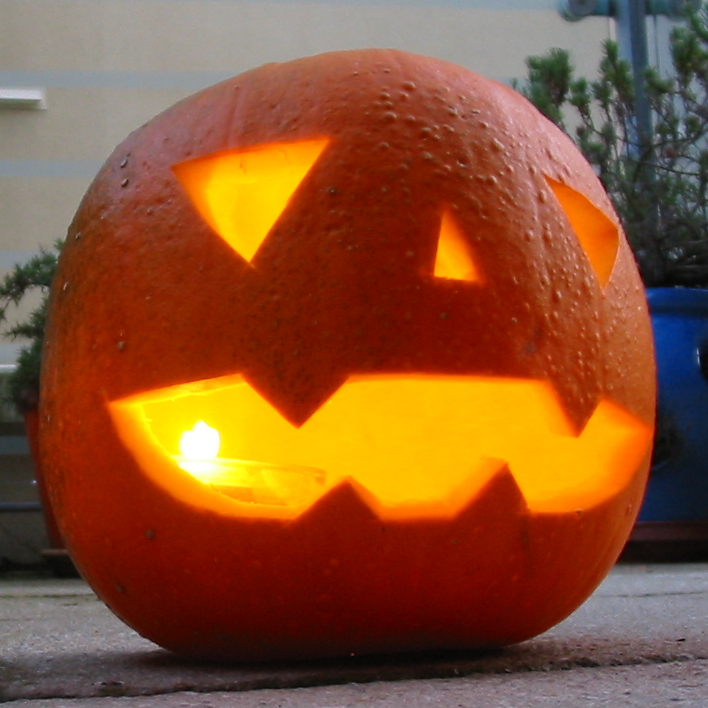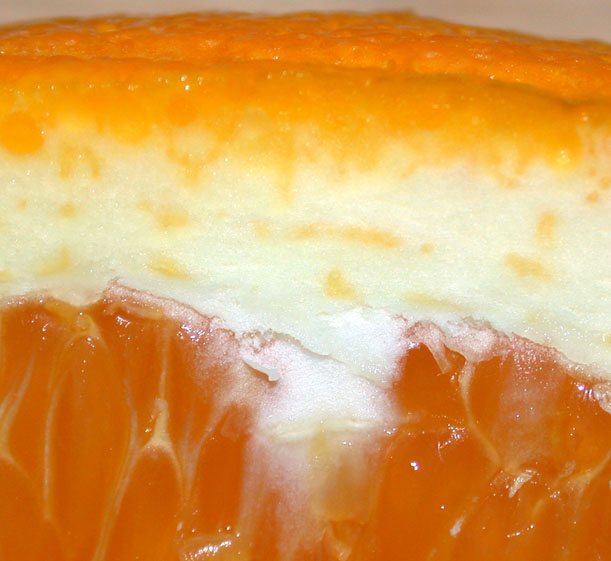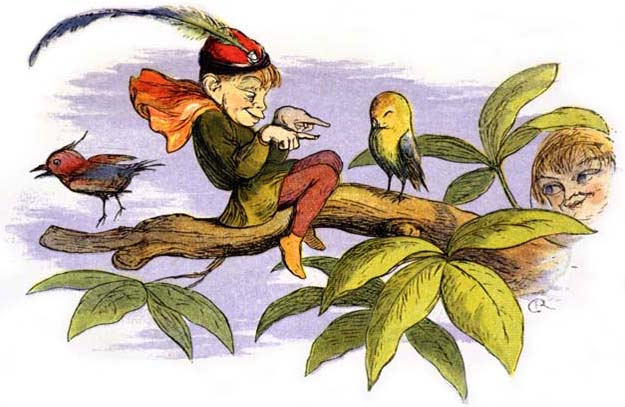|
Jack O' Lantern
A jack-o'-lantern (or jack o'lantern) is a carved lantern, most commonly made from a pumpkin or a root vegetable such as a rutabaga or turnip. Jack-o'-lanterns are associated with the Halloween holiday. Its name comes from the reported phenomenon of strange lights flickering over peat bogs, called '' will-o'-the-wisps'' or ''jack-o'-lanterns''. The name is also tied to the Irish legend of Stingy Jack, a drunkard who bargains with Satan and is doomed to roam the Earth with only a hollowed turnip to light his way. Jack-o'-lanterns carved from pumpkins are a yearly Halloween tradition that developed in the United States when Irish immigrants brought their root vegetable carving tradition with them. It is common to see jack-o'-lanterns used as external and internal decorations prior to and on Halloween. To make a jack-o'-lantern, the top of a pumpkin or turnip is cut off to form a lid, the inside flesh is scooped out, and an image—usually a "scary" or "funny" face—is carved o ... [...More Info...] [...Related Items...] OR: [Wikipedia] [Google] [Baidu] |
Peel (fruit)
Peel, also known as rind or skin, is the outer protective layer of a fruit or vegetable which can be peeled off. The rind is usually the botanical exocarp, but the term exocarp also includes the hard cases of nuts, which are not named peels since they are not peeled off by hand or peeler, but rather shells because of their hardness. A fruit with a thick peel, such as a citrus fruit, is called a hesperidium. In hesperidia, the inner layer (also called ''albedo'' or, among non-botanists, ''pith'') is peeled off together with the outer layer (called flavedo), and together they are called the peel. The flavedo and albedo, respectively, are the exocarp and the mesocarp. The juicy layer inside the peel (containing the seeds) is the endocarp. Uses Depending on the thickness and taste, fruit peel is sometimes eaten as part of the fruit, such as with apples. In some cases the peel is unpleasant or inedible, in which case it is removed and discarded, such as with bananas or grapefrui ... [...More Info...] [...Related Items...] OR: [Wikipedia] [Google] [Baidu] |
Mangelwurzel
Mangelwurzel or mangold wurzel (from :de:Futterrübe, German ''Mangel/Mangold'', "chard" and ''Wurzel'', "root"), also called mangold,Wright, Clifford A. (2001) ''Mediterranean Vegetables: a cook's ABC of vegetables and their preparation in Spain, France, Italy, Greece, Turkey, the Middle East, and north Africa with more than 200 authentic recipes for the home cook'' Boston, Massachusetts: Harvard Common Presspage 52 mangel beet, field beet, fodder beet and (archaic) root of scarcity, is a cultivated list of root vegetables, root vegetable. It is a variety (botany), variety of ''Beta vulgaris'', the same species that also contains the beetroot, red beet (beetroot) and sugar beet varieties. The cultivar group is named Crassa Group. Their large white, yellow or orange-yellow swollen roots were developed in the 18th century as a fodder crop for feeding livestock. Uses Contemporary use is primarily for cattle, pig and other stock feed, although it can be eaten – especially when y ... [...More Info...] [...Related Items...] OR: [Wikipedia] [Google] [Baidu] |
Ireland
Ireland ( ; ga, Éire ; Ulster Scots dialect, Ulster-Scots: ) is an island in the Atlantic Ocean, North Atlantic Ocean, in Northwestern Europe, north-western Europe. It is separated from Great Britain to its east by the North Channel (Great Britain and Ireland), North Channel, the Irish Sea, and St George's Channel. Ireland is the List of islands of the British Isles, second-largest island of the British Isles, the List of European islands by area, third-largest in Europe, and the List of islands by area, twentieth-largest on Earth. Geopolitically, Ireland is divided between the Republic of Ireland (officially Names of the Irish state, named Ireland), which covers five-sixths of the island, and Northern Ireland, which is part of the United Kingdom. As of 2022, the Irish population analysis, population of the entire island is just over 7 million, with 5.1 million living in the Republic of Ireland and 1.9 million in Northern Ireland, ranking it the List of European islan ... [...More Info...] [...Related Items...] OR: [Wikipedia] [Google] [Baidu] |
Vegetable Carving
Vegetable carving is the art of carving vegetables to form beautiful objects, such as flowers or birds. The origins of vegetable carving The origins of vegetable carving are disputed: some believe it to have begun in Japan in ancient times, others believe it to have begun in Sukothai, Thailand 700 years ago, while still others believe that vegetable carving originated in the time of the Tang dynasty (AD 618-906) and the Song dynasty (AD 960-1279) in China. Japan Japan has also been referred to as the root of the art of fruit and vegetable carving, called Mukimono in Japanese. According to the book "Japanese Garnishes, The Ancient Art of Mukimono", by Yukiko and Bob Haydok, Mukimono's origins began in ancient times when food was served on unglazed clay pottery. These rough platters were covered with a leaf before the food was plated. Artistic chefs realized that the cutting or folding of the leaf in different ways created a more attractive presentation. Mukimono did not become pop ... [...More Info...] [...Related Items...] OR: [Wikipedia] [Google] [Baidu] |
Traditional Cornish Jack-o'-Lantern Made From A Turnip
A tradition is a belief or behavior (folk custom) passed down within a group or society with symbolic meaning or special significance with origins in the past. A component of cultural expressions and folklore, common examples include holidays or impractical but socially meaningful clothes (like lawyers' wigs or military officers' spurs), but the idea has also been applied to social norms such as greetings. Traditions can persist and evolve for thousands of years—the word ''tradition'' itself derives from the Latin ''tradere'' literally meaning to transmit, to hand over, to give for safekeeping. While it is commonly assumed that traditions have an ancient history, many traditions have been invented on purpose, whether that be political or cultural, over short periods of time. Various academic disciplines also use the word in a variety of ways. The phrase "according to tradition", or "by tradition", usually means that whatever information follows is known only by oral tradition ... [...More Info...] [...Related Items...] OR: [Wikipedia] [Google] [Baidu] |
Traditional Irish Halloween Jack-o'-lantern
A tradition is a belief or behavior (folk custom) passed down within a group or society with symbolic meaning or special significance with origins in the past. A component of cultural expressions and folklore, common examples include holidays or impractical but socially meaningful clothes (like lawyers' wigs or military officers' spurs), but the idea has also been applied to social norms such as greetings. Traditions can persist and evolve for thousands of years—the word ''tradition'' itself derives from the Latin ''tradere'' literally meaning to transmit, to hand over, to give for safekeeping. While it is commonly assumed that traditions have an ancient history, many traditions have been invented on purpose, whether that be political or cultural, over short periods of time. Various academic disciplines also use the word in a variety of ways. The phrase "according to tradition", or "by tradition", usually means that whatever information follows is known only by oral tradition, ... [...More Info...] [...Related Items...] OR: [Wikipedia] [Google] [Baidu] |
East Of England
The East of England is one of the nine official regions of England. This region was created in 1994 and was adopted for statistics purposes from 1999. It includes the ceremonial counties of Bedfordshire, Cambridgeshire, Essex, Hertfordshire, Norfolk and Suffolk. Essex has the highest population in the region. The population of the East of England region in 2018 was 6.24 million. Bedford, Luton, Basildon, Peterborough, Southend-on-Sea, Norwich, Ipswich, Colchester, Chelmsford and Cambridge are the region's most populous settlements. The southern part of the region lies in the London commuter belt. Geography The East of England region has the lowest elevation range in the UK. Twenty percent of the region is below mean sea level, most of this in North Cambridgeshire, Norfolk and on the Essex Coast. Most of the remaining area is of low elevation, with extensive glacial deposits. The Fens, a large area of reclaimed marshland, are mostly in North Cambridgeshire. The Fens includ ... [...More Info...] [...Related Items...] OR: [Wikipedia] [Google] [Baidu] |
English Folklore
English folklore consists of the myths and legends of England, including the English region's mythical creatures, traditional recipes, urban legends, proverbs, superstitions, and folktales. Its cultural history is rooted in Celtic, Christian, and Germanic folklore. During the Renaissance in the 16th century, England looked to more European texts to develop a national identity. English folklore has continued to differ according to region, although there are shared elements across the country. Its folktales include the traditional Robin Hood tales and the Brythonic-inspired Arthurian legend, and their stories often contained a moral imperative stemming from Christian values. The folktales, characters and creatures are often derived from aspects of English experience, such as topography, architecture, real people, or real events. History Before England was founded in the year 927, Wessex and its surrounding areas' cultures were transformed by the invasion of the Danish Kin ... [...More Info...] [...Related Items...] OR: [Wikipedia] [Google] [Baidu] |
Phenomenon
A phenomenon ( : phenomena) is an observable event. The term came into its modern philosophical usage through Immanuel Kant, who contrasted it with the noumenon, which ''cannot'' be directly observed. Kant was heavily influenced by Gottfried Wilhelm Leibniz in this part of his philosophy, in which phenomenon and noumenon serve as interrelated technical terms. Far predating this, the ancient Greek Pyrrhonist philosopher Sextus Empiricus also used ''phenomenon'' and ''noumenon'' as interrelated technical terms. Common usage In popular usage, a ''phenomenon'' often refers to an extraordinary event. The term is most commonly used to refer to occurrences that at first defy explanation or baffle the observer. According to the ''Dictionary of Visual Discourse'':In ordinary language 'phenomenon/phenomena' refer to any occurrence worthy of note and investigation, typically an untoward or unusual event, person or fact that is of special significance or otherwise notable. Philosophy ... [...More Info...] [...Related Items...] OR: [Wikipedia] [Google] [Baidu] |
Rack Of Pumpkins, Keene NH
Rack or racks may refer to: Storage and installation * Amp rack, short for amplifier rack, a piece of furniture in which amplifiers are mounted * Bicycle rack, a frame for storing bicycles when not in use * Bustle rack, a type of storage bin mounted on armored fighting vehicles * Drying rack, for hanging clothing to dry * Firearm rack, for storing firearms * Pallet racking, structural racks (usually steel) for storing palletised loads * Rack (billiards), for placing billiard balls in their starting positions * Roof rack, a system used to carry items on top of a car * Standardized equipment racks ** 19-inch rack and 23-inch rack, commonly used for computer, communications, and AV equipment ** Rack unit, equipment sizing measure ** International Standard Payload Rack, used in spaceflight * Toast rack, a serving piece Media * ''The Rack'' (album), debut album by Asphyx * ''The Rack'' (1915 film), an American silent drama film * ''The Rack'' (1956 film), a courtroom drama st ... [...More Info...] [...Related Items...] OR: [Wikipedia] [Google] [Baidu] |
Electric Light
An electric light, lamp, or light bulb is an electrical component that produces light. It is the most common form of artificial lighting. Lamps usually have a base made of ceramic, metal, glass, or plastic, which secures the lamp in the socket of a light fixture, which is often called a "lamp" as well. The electrical connection to the socket may be made with a screw-thread base, two metal pins, two metal caps or a bayonet cap. The three main categories of electric lights are incandescent lamps, which produce light by a filament heated white-hot by electric current, gas-discharge lamps, which produce light by means of an electric arc through a gas, such as fluorescent lamps, and LED lamps, which produce light by a flow of electrons across a band gap in a semiconductor. Before electric lighting became common in the early 20th century, people used candles, gas lights, oil lamps, and fires. Vasily Vladimirovich Petrov developed the first persistent electric arc in 1802, an ... [...More Info...] [...Related Items...] OR: [Wikipedia] [Google] [Baidu] |









